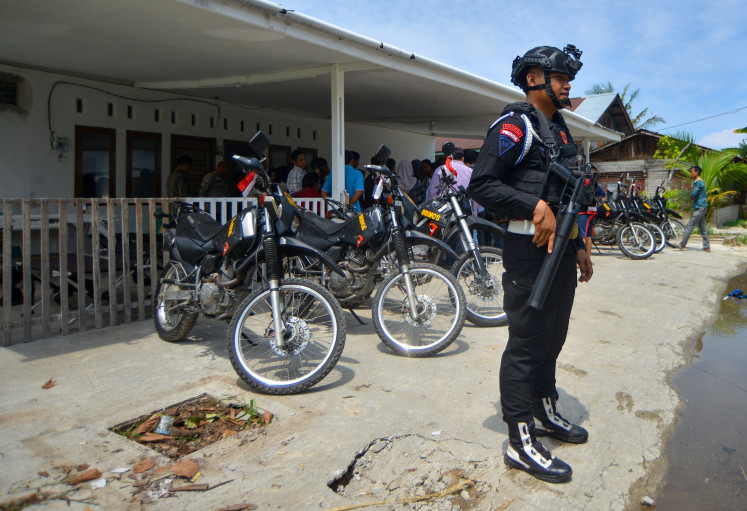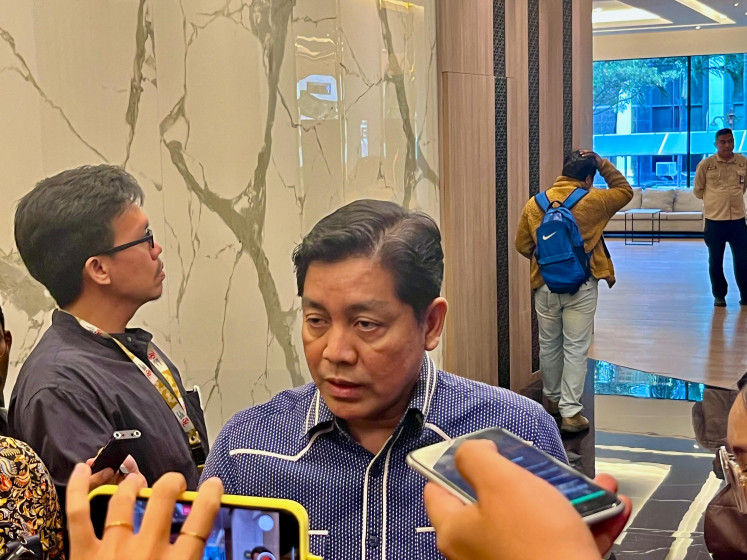Popular Reads
Top Results
Can't find what you're looking for?
View all search resultsPopular Reads
Top Results
Can't find what you're looking for?
View all search resultsGovt pay code system cuts health costs
The Health Ministry is using a coded payment system to control health costs under the Jamkesmas health plan for the poor
Change text size
Gift Premium Articles
to Anyone
T
he Health Ministry is using a coded payment system to control health costs under the Jamkesmas health plan for the poor.
First tested in September 2008, the system, known as Diagnoses-related Group (DRG), standardizes treatment for each medical case to ensure that patients pay the same fees regardless of which hospital treats them.
The ministry introduced the system in Jamkesmas, a free healthcare provision for the poor.
Supriyantoro, the Health Ministry’s health management director general, said the hospitals that were under the Jamkesmas community health insurance scheme used a diagnosis-related group system because it was more efficient than a fee-for-service system, a common payment model at hospitals where services are paid for separately.
He said the ministry expected to implement the system into a wider number of hospitals after the government passed the social security providers (BPJS) bill.
“More than 1,000 hospitals use Jamkesmas — both public and private hospitals. When the social security providers bill is passed, we will apply this system to the other hospitals. We chose this system because Indonesia had a huge population, therefore, it would not be feasible to finance healthcare with a fee-for-service system,” Supriyantoro said.
The DRG system was developed at Yale University after collecting databases of patients with similar medical symptoms.
The system is used in Medicare and Medicaid services, two major healthcare provisions in the United States that are financed by the federal and state governments.
Usman Sumantri, the ministry’s health insurance and financing director, said the ministry had applied the DRG system since 2008 for hospitals under the Jamkesmas scheme, after trying the fee-for-service system for nine months.
He said that when the ministry used the fee-for-service system with the Jamkesmas scheme, they realized that the bills could keep rising in cost because the hospitals could force patients to undergo high-priced tests that they did not really need.
It has become public knowledge that many hospitals often forced patients to undergo various tests to increase the hospital’s income. One such case was of Prita Mulyasari, who underwent many tests, was misdiagnosed with dengue fever and was put in inpatient treatment for several days despite the fact that she only had measles.
“With a Diagnosis-Related Group, when a patient is diagnosed with, for example cardiac failure, the hospital only gives the medicine and treatment that the patient really needs,” Usman said.
He said that implementing a DRG managed to cut inpatient periods from 7.4 days per inpatient to 6.4 days. He said that it was a win-win solution for both the patients and the hospitals.
Supriyantoro said his office had invited insurance companies such as Askes to make DRG-based calculation, and that the limit would depend on each company’s capacity. He explained that Askes could only cover 80 percent of the existing hospital fees.
The directorate general received Rp 2.3 trillion (US$262.2 million) for capital expenditures in 2011, only 10 percent of the Rp 25–32 trillion they needed.
In proportion to the state budget, the ministry budget was only 1.99 percent, compared to the 5 percent stipulated by the Constitution.
“The health budget percentage is low. Even Timor Leste devotes 7 percent of it’s state budget to healthcare. However, we are optimistic that we can optimize the current budget,” he said.
The ministry has allocated
Rp 5.125 trillion (US$542 million) for Jamkesmas in 2010 compared to Rp 4.6 trillion in 2009.
The number of Jamkesmas recipients in 2010 is 76.4 million, similar to the 2008 figure.










